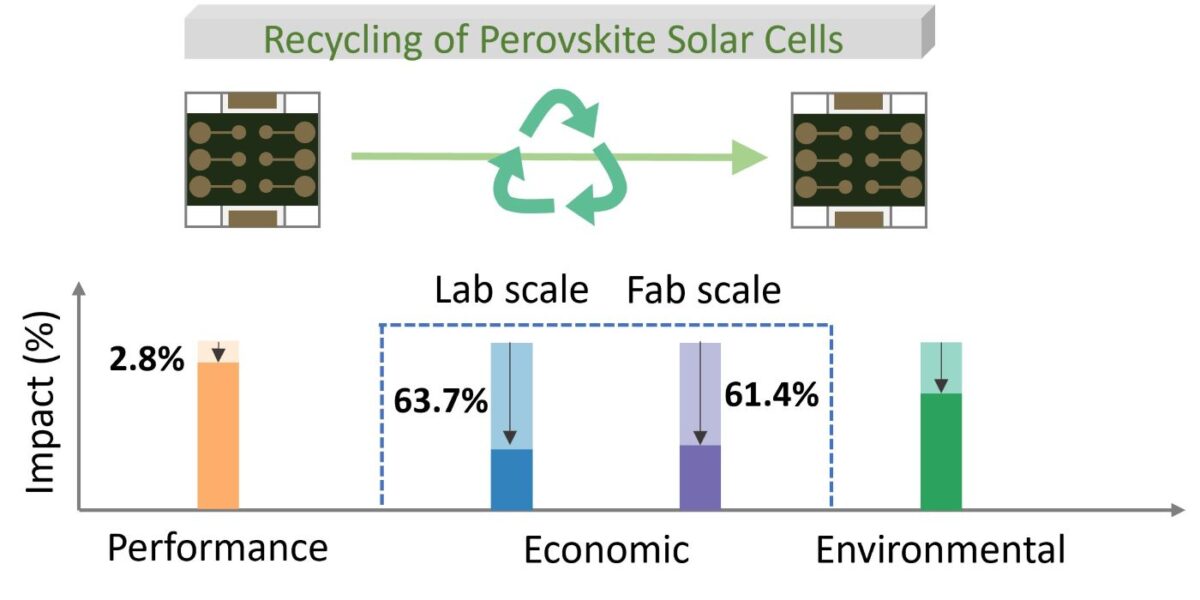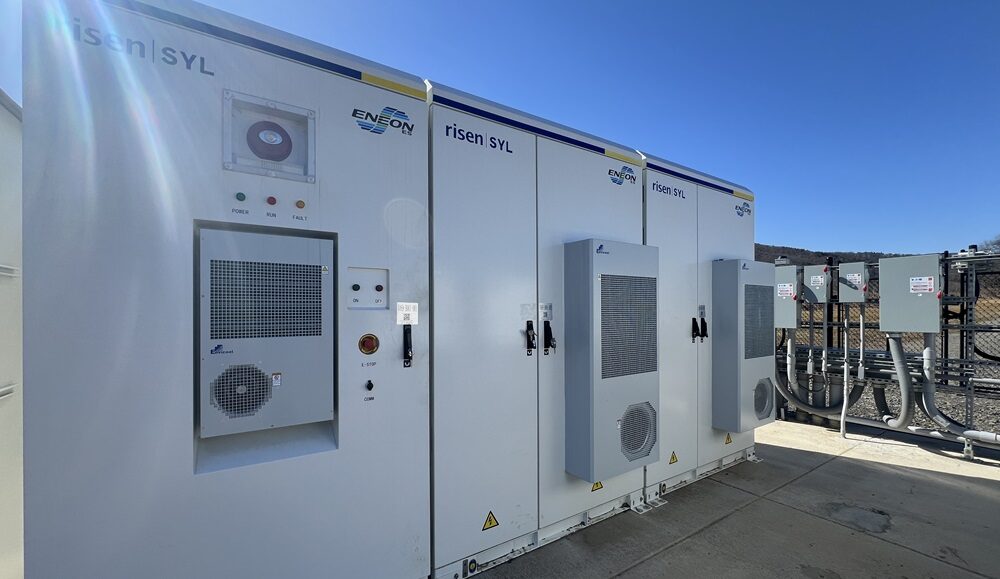A German research team at Helmholtz Institute Erlangen-Nürnberg for Renewable Energy, Jülich Institute for Energy, has reported success with the recovery of every layer of a planar methylammonium lead iodide (MAPbI3) perovskite solar cell using a layer-by-layer solvent extraction approach, followed by purification to restore quality.
“This method potentially allows for up to 99.97% recycled mass, thereby conserving resources and reducing waste,” the scientists said “Techno-economic projections suggest that the proposed recycling procedure has the potential to afford substantial cost savings. In the lab, recycling could reduce material costs by up to 63.7%, in industrial manufacturing by up to 61.4%.”
“It surprised me that it was possible to recover such a high percentage of the original material, and that there is such a clear monetary benefit to recycling even on a lab scale,” the research's corresponding author, Ian Marius Peters, told pv magazine.
The researchers explained that halide perovskite solar cell materials could be retrieved and processed to a quality that they can be used to make a new solar cell without significant loss in material quality and device efficiency. “Layers in solution-processed solar cells can be separated with relative ease through selective dissolution,” they stressed.
The project sounds simple, but it was not. The recycling of the spiro-OMeTAD material used in the hold transport layer (hTL) was not easy due to the presence of residual and multiple additives, according to Zhenni Wu, the study's lead researcher. “We eventually found that the reuse of spiro-OMeTAD, while maintaining the cell efficiency, does not require the complete removal of impurities,” Wu told pv magazine.
“We started with a lab process. The constraint was that we had to start pretty much at zero. We're still working on our setup. Next, we want to get the efficiencies up, and we want to show that you can do this also for a module,” said Peters.
To assess the quality of the recycled material, the team fabricated a variety of solar cells, some with several layers of recycled material, and some made entirely with recycled materials. “Every combination yielded efficiency comparable to cells constructed exclusively with fresh materials, demonstrating the efficacy of the developed recycling process,” noted the team.
Two types of devices were assembled: one was a typical small-area functional cell fabricated with spin coating; another was a larger pseudo-module prepared with doctor blading or drop-casting. The stack was as follows: indium tin oxide (ITO), a tin(IV) oxide (SnO2) layer, a MAPbI3 perovskite absorber, a spiro-OMeTAD hole transport layer, and a gold (Au) contact.
The researchers noted that the stack was chosen for several reasons, one being that it enables selective removal of materials.
In a discussion of the value and weight of the material, the team stressed that ITO glass has the “highest recycling priority” as it accounts for more than half of the value and makes up most of the mass of the module, which is 99.9%. “Being able to reuse the substrate will impact both the economic viability as well as the sustainability balance of the cell,” it said, adding that switching to FTO is worth considering.
It also stressed that the high-cost spiro-OMeTAD demands a more efficient and scalable preparation method. Until replacements are found, recycling the material is “crucial.” Another important aspect is the use of lead. The team said that its presence in metal halide perovskite solar cells could necessitate establishing recovery processes as a prerequisite for commercialization.
As indicated by the research's findings, the adoption of recycling and environmentally-friendly technology have design and manufacturing implications. For example, the solvents used in the fabrication of perovskite solar cells.
Wu explained that most solvents currently in use are hazardous. “Future research should focus on finding greener alternatives to reduce carbon footprints. Similarly, environmentally friendly solvents should be prioritized for recycling processes,” said Wu.
“The takeaway is that you should recycle components of perovskite solar cells, especially substrates. This is true not only for industry but also for labs,” said Peters.
The details of the study appear in the paper “Closing the loop: recycling of MAPbI3 perovskite solar cells,” published in Energy & Environmental Science.
This content is protected by copyright and may not be reused. If you want to cooperate with us and would like to reuse some of our content, please contact: editors@pv-magazine.com.



By submitting this form you agree to pv magazine using your data for the purposes of publishing your comment.
Your personal data will only be disclosed or otherwise transmitted to third parties for the purposes of spam filtering or if this is necessary for technical maintenance of the website. Any other transfer to third parties will not take place unless this is justified on the basis of applicable data protection regulations or if pv magazine is legally obliged to do so.
You may revoke this consent at any time with effect for the future, in which case your personal data will be deleted immediately. Otherwise, your data will be deleted if pv magazine has processed your request or the purpose of data storage is fulfilled.
Further information on data privacy can be found in our Data Protection Policy.